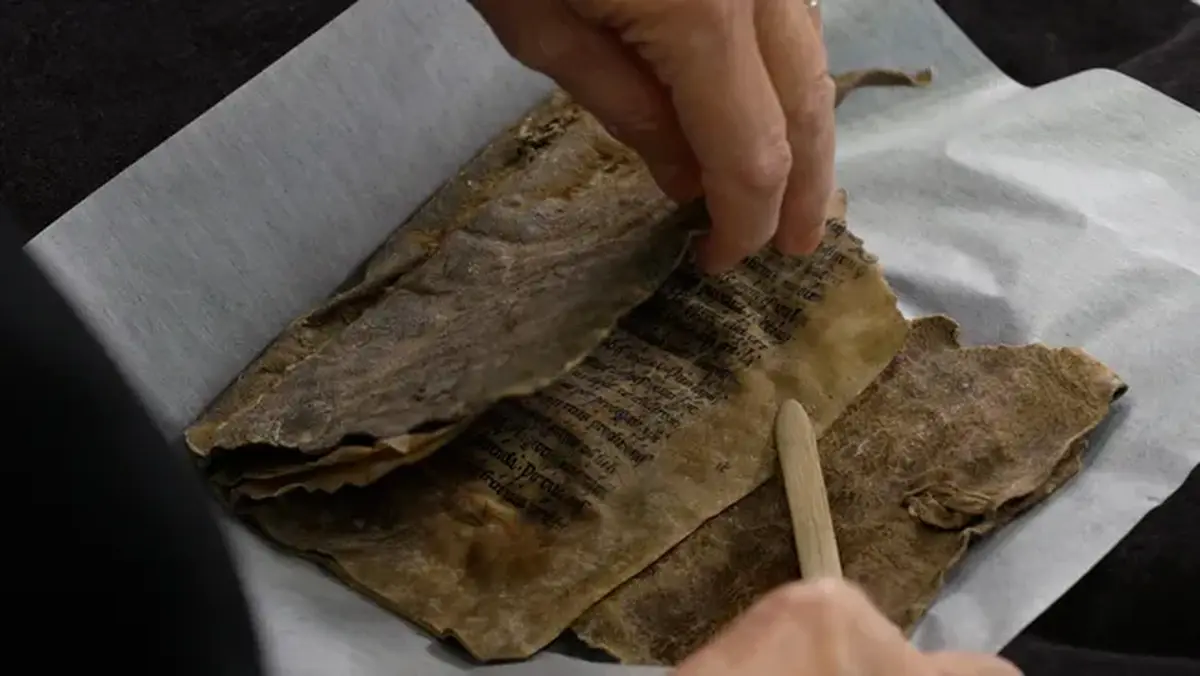 Experts at the National Library of have announced that a liturgical songbook bound in seal skin, crafted by a local artisan around the year 1200, is likely the oldest book in the country.
Experts at the National Library of have announced that a liturgical songbook bound in seal skin, crafted by a local artisan around the year 1200, is likely the oldest book in the country.
According to the library, the book, known as the Hagenes Codex (named after the farming family that owned it), consists of two folded sheets of parchment and a cover made from seal skin.
This material was historically used to create water-resistant and durable items. Therefore, it’s no surprise that this medieval songbook has survived to this day. Modern microscopy techniques have revealed tiny hairs from the marine mammal in the binding. Meanwhile, the parchment, which displays texts and musical notes, is made from .
Until the 16th century, was likely used in a monastery or a rural church. It later passed into the hands of the Hagenes family, where it was handed down through generations, as reported by Live Science.

A Score in a Unique Binding
The texts in the book are written in Latin. It contains eight medieval liturgical chants with musical notation, including a hymn to the Virgin Mary and a song dedicated to All Saints’ Day. Several pages are missing.
As confirmed by library restorer Chiara Palandri, the binding and several other features indicate that the book was made by a Norwegian craftsman using local materials. The expert also suggested that the leather strap on the book may have been made from deer skin.
“This book gives an incredibly authentic impression. It’s exactly what a priest or cantor might have carried with them to church,” says Aslaug Omundsen, a professor of medieval Latin at the University of Bergen.
According to researchers, the seal skin binding, with its tiny protruding hairs, is unique to medieval Norway. Such covers are rarely found in other Scandinavian regions.
Recent DNA studies of dozens of medieval book bindings from the 12th and 13th centuries have shown that several “furry books” created by Cistercian monks in France had bindings made from both common and Greenland seals. Materials from various regions traveled along trade routes and could have reached England and Belgium as tithes from Scandinavians after the Viking Age.
However, according to Ms. Palandri, the Hagenes Codex differs from continental examples. This suggests that it was indeed made in Norway.
Scientists plan to conduct further research to definitively determine the origins of the skin and parchment, as well as to clarify the book’s date of creation. Ultimately, researchers aim to confirm whether this songbook is truly the oldest surviving book in Norway.
“If it was indeed created here, it would be the only known medieval Norwegian book bound in seal skin. It has a very simple appearance, but that’s what makes it unique – the songbook preserves traces of early book-making methods,” concluded Chiara Palandri.
